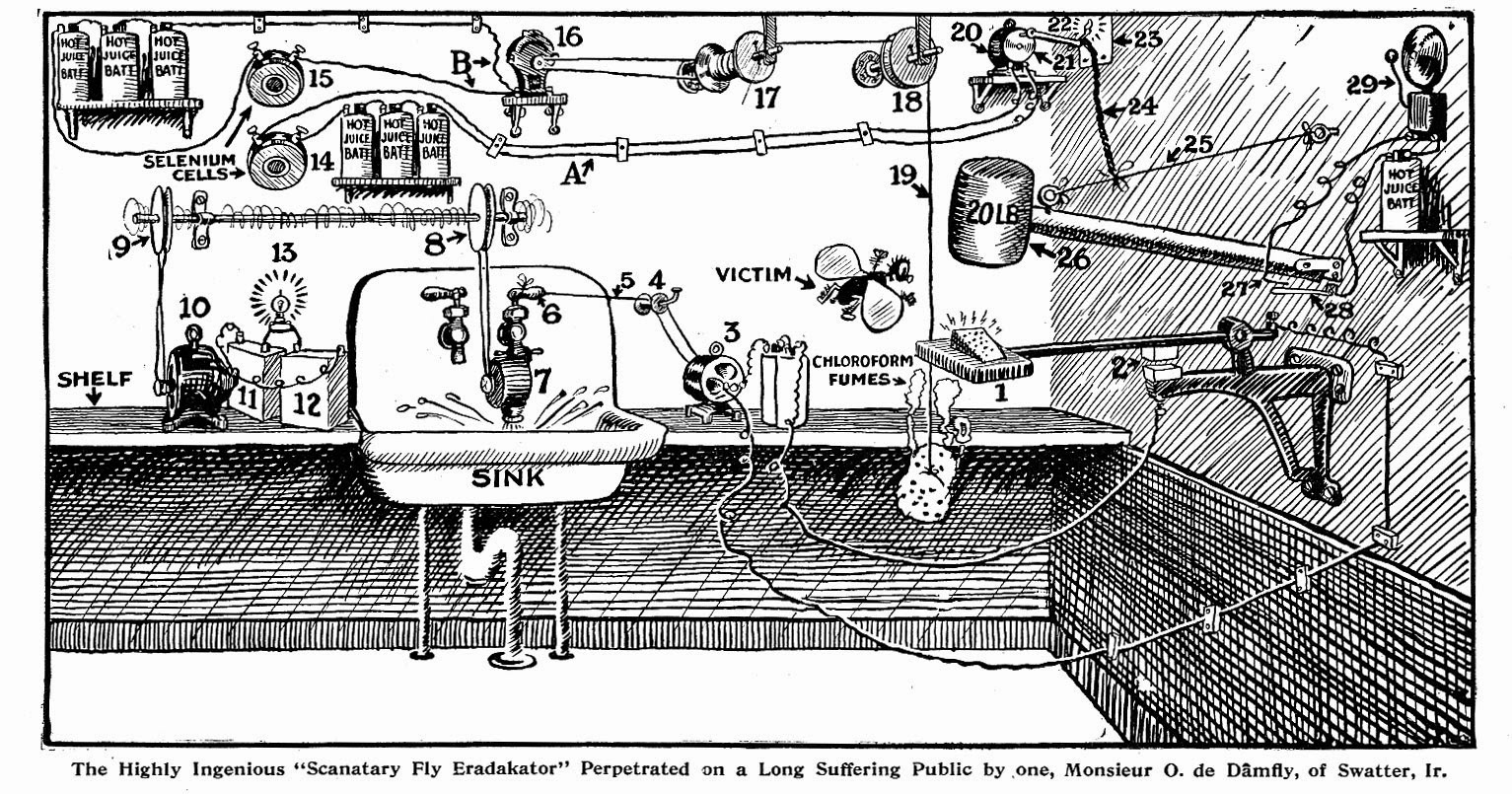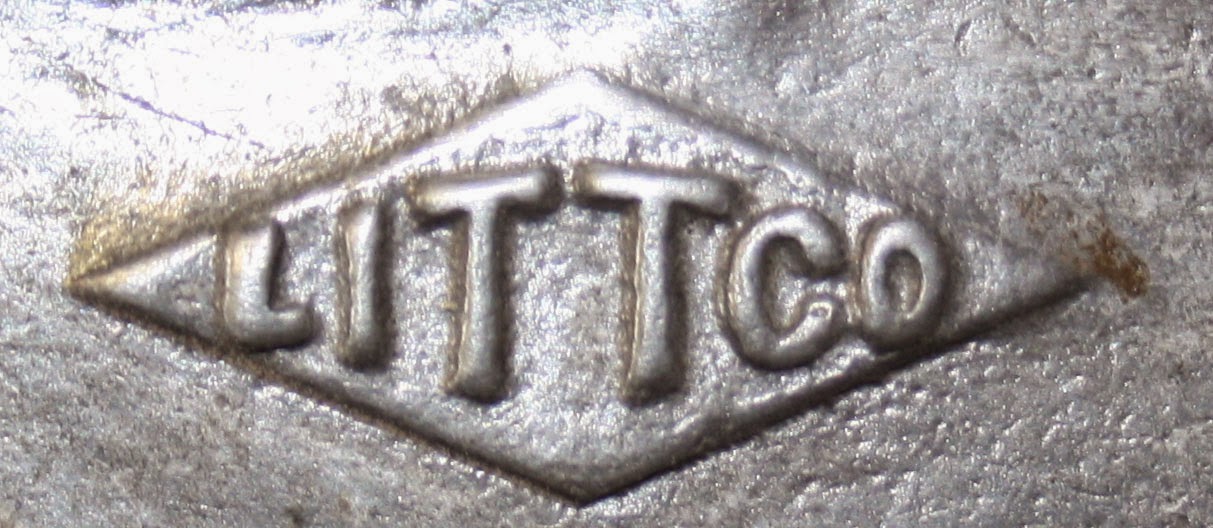Sunday, November 30, 2014
"Simplicitas" Improved Wash-Down Closet
 |
| W.G.V. Balchin (Consultant Editor). The Country Life Book of the Living History of England. Country Life Books, 1981. |
Doulton & Co. Ltd. of Lambeth persevered from 1854 to 1956. The company survives today as Royal Doulton at Burslem, Stoke-on-Trent. Toilets, china plates--really not much difference except in use.
We used to make things in this country. #173: The Vanguard Toy Company, Toronto, Ontario
I picked up a box of these "Uni-Blocks" recently. Imagine the fun kids used to have building things like a Bus Waiting Shelter! Making a cannon that actually fired a wooden pencil at your younger brother was probably even more exciting, what with the trip to the hospital Emergency Room and all. The instructions also allowed you to perfect your command of French: "Où est la cabane d'arrêt? Je vais à la balancoire!"
The Vanguard Toy Company operated out of both Buffalo, New York and Toronto. In 1957, two Ontario inventors (Clarence Leonard Mehan of Port Credit and Douglas Patterson of King City) patented a more sophisticated block, which was later put into production by the Vanguard Toy Company:
The company disappeared, probably because it's products couldn't compete with Lego when it was introduced to North America through Samsonite in 1961.
Saturday, November 29, 2014
FIAT Works, Turin
 |
| S.C.H. Davis. Cars Cars Cars Cars. London: Paul Hamlyn, 1967. |
Fix It Again Tony!
Actually, pretty impressive compared to car assembly lines in other manufacturing countries at this time. See, for example, Building the Kenosha Cadillac.
Welcome to Canada: New Brunswick, 1929
Friday, November 28, 2014
Steamboat Wilson G. Hunt
William H. Ewen; Days of the Steamboats; Parents Magazine Press 1967
During the California Gold Rush, transportation to San Francisco was at a premium and unlikely vessels were pressed into service to carry as many eager goldseekers as possible. The former New York harbour excursion boat Wilson G. Hunt was one such ship, loaded up and sailed around Cape Horn to California where it served for many years on the west coast.
During the California Gold Rush, transportation to San Francisco was at a premium and unlikely vessels were pressed into service to carry as many eager goldseekers as possible. The former New York harbour excursion boat Wilson G. Hunt was one such ship, loaded up and sailed around Cape Horn to California where it served for many years on the west coast.
Good Reads: Those Who Fall
Published by Pocket Books in 1988. Cover art work by Al Freeman.
This is without a doubt one of the best-written war history books I have ever read. Anyone who prefaces his chapters with quotes from A.E. Housman or Dylan Thomas deserves our respect. Muirhead himself was trained as a structural draftsman and as a marine engineer, but has the soul of a poet.
As part of the 301st Bomb Group, the author piloted a B-17 out of Italy on bombing raids against targets in Italy, Germany and other European countries. In June 1944 he was shot down on his 30th mission over Ploesti and spent the remainder of the war in captivity in Bulgaria.
This book is by no means a glorification of war, but rather one man's recollections of the experiences of what it was like to fight the war at 20,000 plus feet and to go out on mission after mission knowing each one might be your last. Muirhead is a very gifted writer, and he uses his talents to terrific advantage.
Thursday, November 27, 2014
Rickman Yamaha
Rickman Metisse Mark IV Scrambler kit for Yamaha DT-1. Nickel-plated frame and fibreglass components. Buy it one of two ways, Kit- you provide the engine and suspension, $597, complete rolling chassis $1096. Expansion chamber extra at $89.
For comparison, a new 250 cc DT-1 from Yamaha was about $600.
Walker's "Cherub" III Taffrail Ship-Log
For sale at the Art of the Sea gallery in South Thomaston Me.
More info:
From http://landandseacollection.co
(The Walker Cherub III Log) was developed in 1879, 13 years after the Harpoon log, by Thomas Ferdinand Walker for larger size ships. It is immense in size compared to other logs, and is arguably the most useful and long serving log offered.
It was made by Thomas Walker & Son, Ltd of Birmingham, England whose name is synonymous with patent logs. It features a self contained instrument head with a distance measuring calculator which was mounted on the vessel's taffrail. The instrument section has a white porcelain face, and three analog counters with black Arabic numbers for distance run. A very large spinner or fish is trailed in the water behind the ship and its rotation is transmitted to the counter by means of a line.
From http://ajitvadakayil.blogspot.
This instrument is a recorder for determining distance travelled and thus ship’s speed. It is made of brass with a ceramic dial, with the main scale marked from 0 to 100 miles and two inset dials marked from 0 to 1000 miles and 0 to 1 mile. It has a fixing plate, on which it can turn, with which it would have been attached to a suitable part of the ship, typically the taffrail, the rail at the stern of a ship. As a result, this type of log was often called a taffrail log. The recorder would have been connected to a rotor that was towed behind the ship. The revolutions of the rotor registered on the indicator, thus measuring the distance travelled. For this model, 900 revolutions of the rotor registered as 1 nautical mile.
More info:
From http://landandseacollection.co
(The Walker Cherub III Log) was developed in 1879, 13 years after the Harpoon log, by Thomas Ferdinand Walker for larger size ships. It is immense in size compared to other logs, and is arguably the most useful and long serving log offered.
It was made by Thomas Walker & Son, Ltd of Birmingham, England whose name is synonymous with patent logs. It features a self contained instrument head with a distance measuring calculator which was mounted on the vessel's taffrail. The instrument section has a white porcelain face, and three analog counters with black Arabic numbers for distance run. A very large spinner or fish is trailed in the water behind the ship and its rotation is transmitted to the counter by means of a line.
From http://ajitvadakayil.blogspot.
This instrument is a recorder for determining distance travelled and thus ship’s speed. It is made of brass with a ceramic dial, with the main scale marked from 0 to 100 miles and two inset dials marked from 0 to 1000 miles and 0 to 1 mile. It has a fixing plate, on which it can turn, with which it would have been attached to a suitable part of the ship, typically the taffrail, the rail at the stern of a ship. As a result, this type of log was often called a taffrail log. The recorder would have been connected to a rotor that was towed behind the ship. The revolutions of the rotor registered on the indicator, thus measuring the distance travelled. For this model, 900 revolutions of the rotor registered as 1 nautical mile.
Dumb tool idea
Carl Stotz and Little League Baseball
 |
| J.H. Ashdown Hardware Company Limited. Winnipeg, Manitoba. 1953 Catalogue. |
Look at the signature on the baseball above. Carl Stotz founded the American Little League in 1939. He remained Commissioner of the League until 1956, when he left in protest over expansion plans for the league. As Joe Mathews wrote in his 1997 piece in The Baltimore Sun:
Stotz, who started the very first Little League in 1939, believed that Little League Baseball Inc., the federally chartered non-profit organization that administers more than 7,000 Little Leagues around the world, has become too big and too corporate, more concerned with public relations and TV revenues than the experiences of the 3 million children who participate annually. Stotz so disliked the World Series, in fact, that he never visited Lamade Stadium where World Series games are played -- even though admission is free and he lived only 3 miles away.
The World Series, he said in 1989, "takes away from the sport what Little League is all about, a chance to play neighborhood baseball."Sound familiar? Mathews continues:
"He was not a businessman. He was a laborer," says Karen Stotz Myers, the younger of his two daughters. "He never ran anything besides Little League. And he was always determined that parents and volunteers, not he, would be running it. Little League was a common man's creation."
While he was not sophisticated, Stotz was unshakable in his values. In those heady days, Stotz turned down a $1,000 fee to appear on TV's "This Is Your Life" after he learned a cigarette company was among its sponsors. Commercialism and professionalism were fine for business, he often said, but Little League should abide neither.
Quite the guy, Carl Stotz. A rare man then, nowadays rarer still.
Wednesday, November 26, 2014
Cragar Helmets
A helmet ad that can't offend anyone!
The founders of Bell Helmets acquired Cragar Industries in 1955. Maybe the ones in the ad are actually re-badged Bells?
Gasoline stations back in the day
From Pictorial Brighton 1859-1984. (Brighton Anniversary Book Committee, 1984). Note the British spelling of "gasolene" in the top photo. Now in Canada we used the American spelling (just like we do for "vise"!)
Esico Luger
Doesn't look much like a Luger to me!
From an old pasteboard box for an Esico soldering iron . Below, more stuff from the box:
The Electric Soldering Iron Company had its beginnings in 1928. It's still around, now as Esico-Triton International, and still headquartered in Deep River, Connecticut. There are not many American tool firms left that can boast such longevity and loyalty to one location.
Tuesday, November 25, 2014
Princes' Gate At the Canadian Exhibition
 |
| Fredrick H. Armstrong, Toronto: The Place of Meeting; Windsor Pub. 1983 |
The Princes' gates was opened in 1927 as a celebration of the Golden Jubilee of Canadian Confederation. Picture taken in 1931. The Electrical Building in the background was built in 1928 and demolished in 1972, replaced by the Direct Energy Building in 1997.
Pictures taken in 2010 during restoration work.
One of my vices is vises: The Littlestown Hardware & Foundry Company, Littlestown, Pennsylvania
Above, a handy little vice on my woodworking bench. Below, a large C-clamp made by the same firm:
Open Air Kindergarten, 1929
Monday, November 24, 2014
Horse-drawn bread wagon
 |
| Pictorial Brighton 1859-1984. Brighton Anniversary Book Committee, 1984. |
Minsk Auto Works Tip-Up Lorry
Sunday, November 23, 2014
We used to make things in this country. #172: The Compact Ladder Company, Toronto, Ontario
I was recently forced to scrap an old wooden extension ladder due to age and deterioration. Despite the fact that I had stepped through a rotten rung or two, there was nothing wrong with the shapely cast steel mechanisms. I couldn't throw them out so now need to find a new use for them. Cast into them was "Compact Ladder Co."
According to his obituary, Thomas Alfred Dalton founded the company back in the late 1950's, and operated it until his retirement. Born in Middlesex, England, he had quite a varied career before starting this company.
As the ads below show, making wooden ladders was once quite an enterprise. You had to know about the qualities of various woods, and which ones would shrink less so rungs wouldn't pull out of the sides. Still, old wooden ladders are best used as decoration today--their safety does not improve with age.
 |
| Sell's National Directory of Large Commercial Houses and Buyers' Guide. London: Business Dictionaries Ltd., 1920. |
 |
| J.H. Ashdown Hardware Company Limited. Winnipeg, Manitoba. 1953 Catalogue. |
Subscribe to:
Posts (Atom)










































